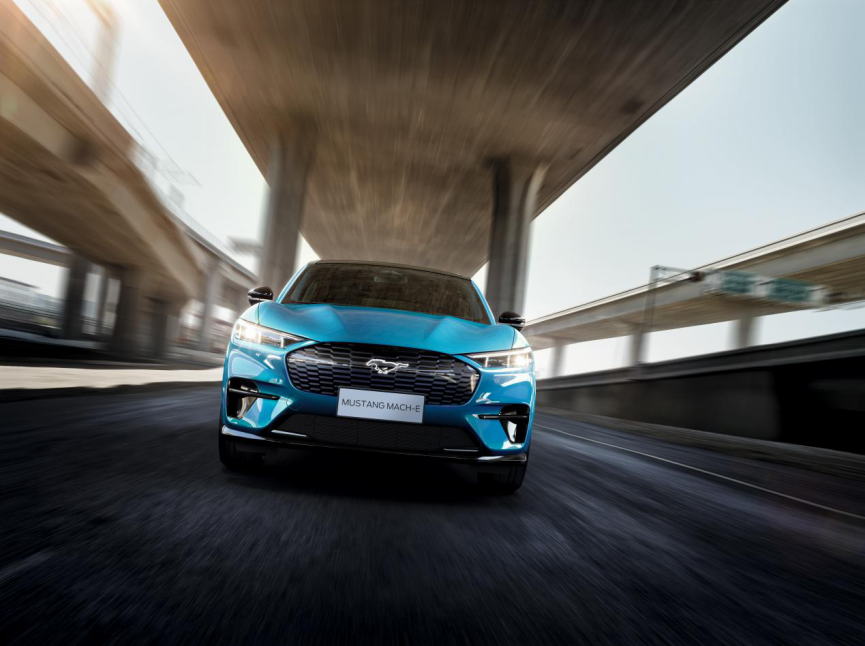The Curtain of Smart Electric Vehicles is Slowly Unveiling
Traditional giants in the automotive industry are all trying to catch up with Tesla in the race towards electric vehicles. Even Ford has put forth all its efforts to make a quick turn, as the Mustang Mach-E, a new smart electric vehicle that may still be unfamiliar to Chinese consumers, has become a “transformation work” for Ford and has started to gain new fans in both the US and global markets. In February of this year, Ford has sold nearly 4,000 Mach-E vehicles in North America, and global orders continue to increase. Although the delivery volume has not yet had a substantial impact on Tesla’s sales, it is sufficient to prove that this “North American brother” of Tesla has a strong product force and brand appeal.
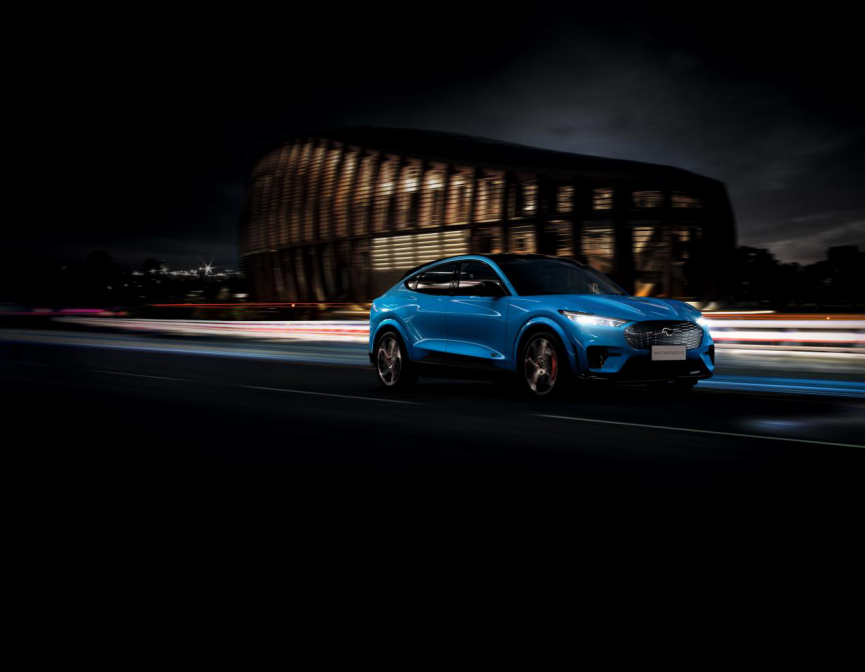
Just two months ago, Ford also officially announced that the Ford Mustang Mach-E will be delivered domestically in China this year. Before it is officially released in the Chinese market, we went to the Shanghai Ford EV team’s headquarters – HuLianBaoDi, and talked to Ford engineers in China, hoping to further understand this car and Ford’s determination from the perspectives of technology, product, and brand.
The Invisible “Architecture”
For a “true smart electric vehicle”, the “magic” of architecture has always been an unavoidable topic, because everything we can think of about intelligent experience is based on an invisible and untouchable “architecture” for users. Of course, based on the Ford electric vehicle platform, Mach-E has achieved the optimization of battery layout and provided a larger space for the car, but what we are going to talk about here is Ford’s brand new electronic and electrical architecture FNV (Fully Network Vehicle), which is applied for the first time.
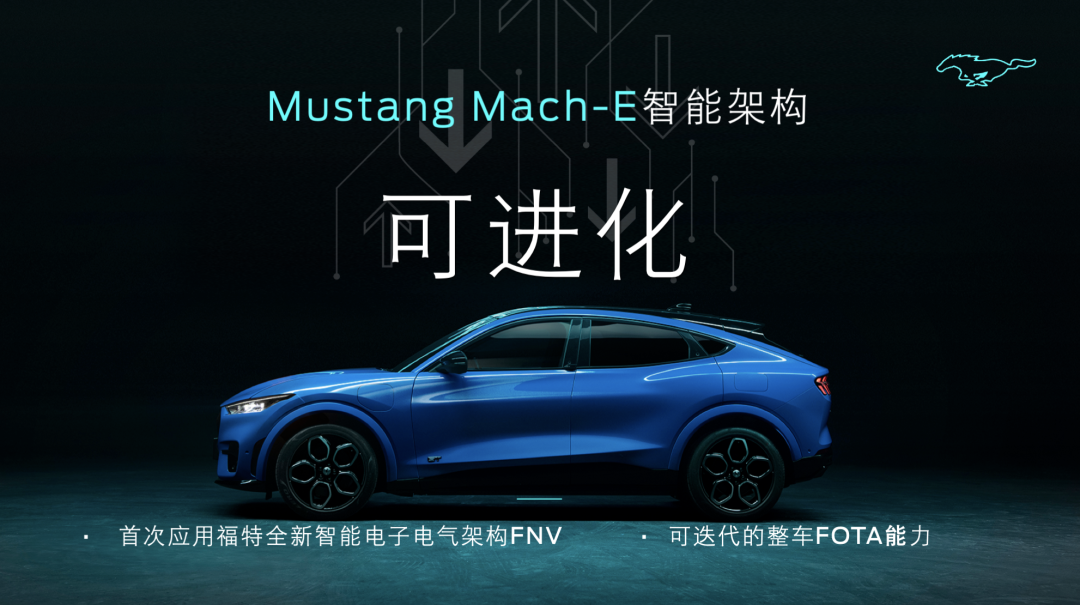
We all know that FOTA is the embodiment of the vitality of smart electric vehicles. The ability and experience of the “next-generation smart electric vehicle” on FOTA not only reflects the product force and scalability of this car but also directly determines the technical strength and determination of a car enterprise towards intelligence.
On the FNV architecture, Ford Mach-E supports 100-megabit Ethernet broadband and a maximum of 80G data throughput, providing high-speed data transmission for the information interaction of the entire vehicle’s FOTA, autonomous driving, and intelligent cockpit inside the car.
In addition, Mach-E is also equipped with an enhanced intelligent central gateway ECG, which can be understood as an intelligent router in a smart home, with a large capacity storage space and efficient data processing capabilities. It supports data communication encryption inside and outside the car and up to 5 Ethernet communication interfaces and high scalability.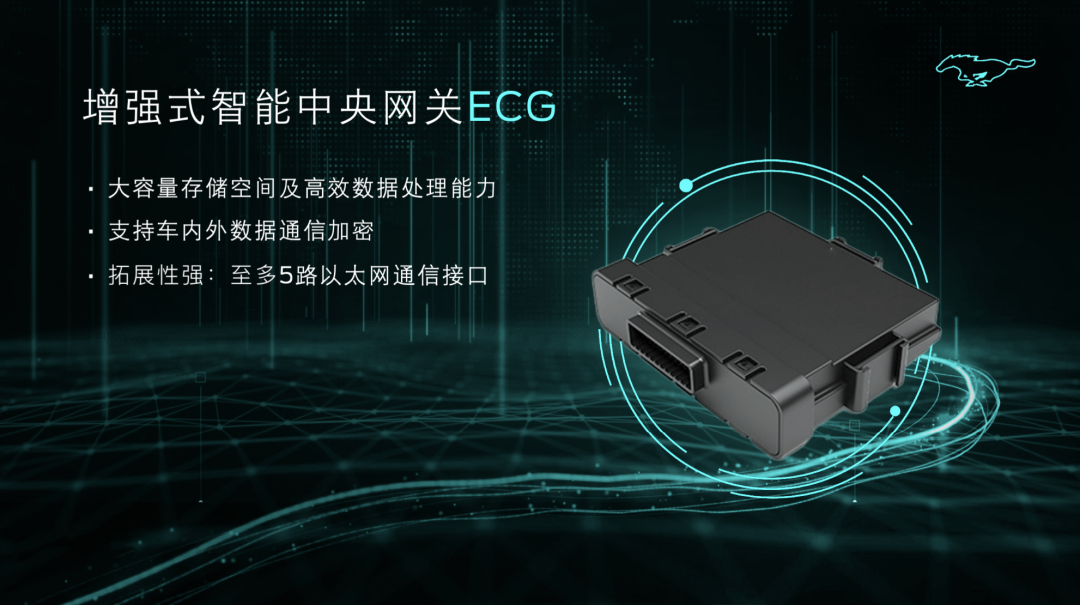
In terms of OTA, Ford’s Chinese Engineers revealed that the Mach-E OTA covers the entire vehicle’s core systems, including intelligent driving, intelligent cockpit, and power modules. Moreover, it supports the A/B backup upgrade mode and break-point continuation. In other words, users can upgrade the vehicle during the driving process without worrying about the vehicle’s breakdown. The system will automatically roll back to the previous version without affecting users and data’s safety. Although the A/B backup OTA method is relatively expensive for the entire vehicle factory, Ford’s approach ensures a better user experience and safety to a certain extent.
Down-to-earth “Cockpit”
The Mach-E cockpit is visible to the naked eye, consisting of a floating 15.5-inch LCD screen and a 10.2-inch instrument panel, and is driven by Qualcomm Snapdragon 820A automotive processor. Some people may say that Tesla’s new Model S has replaced the vertical screen with a horizontal one, indicating that the vertical screen solution is outdated? Actually, in my opinion, the horizontal or vertical screen is just a subjective choice, and there is no objective right or wrong. Because beyond hardware, more notably, it is the software experience.
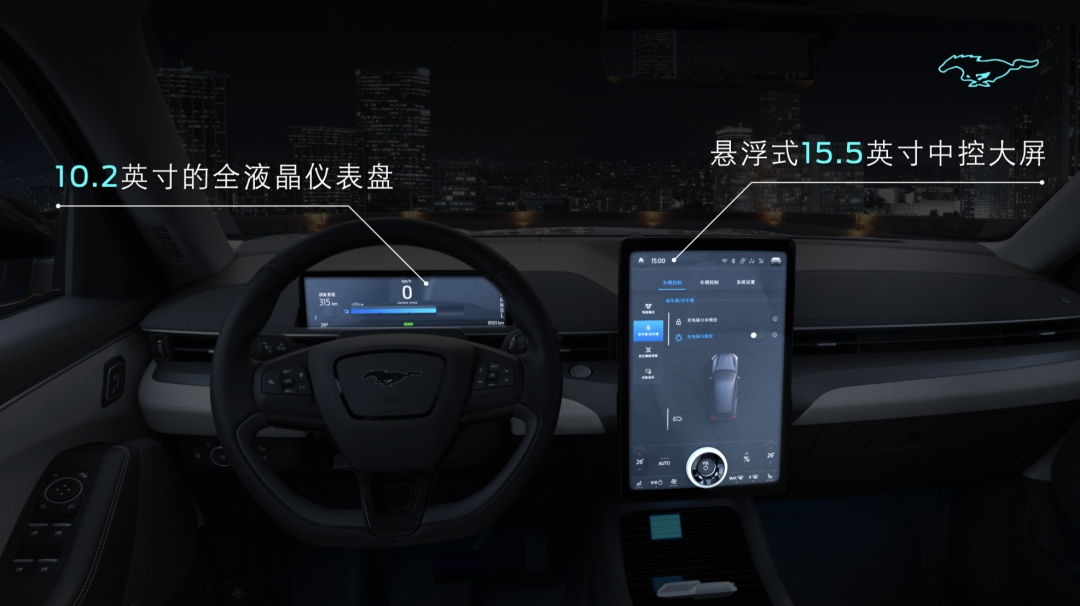
The Mustang Mach-E is equipped with Ford’s global first visual voice assistant, VPA, which integrates natural semantic recognition and allows customization of wake-up words. It can identify the needs voiced by the driver and passenger seats and control various in-car features such as air conditioning, front/rear storage compartments, seats, windows, steering wheels, and ambiance lights.
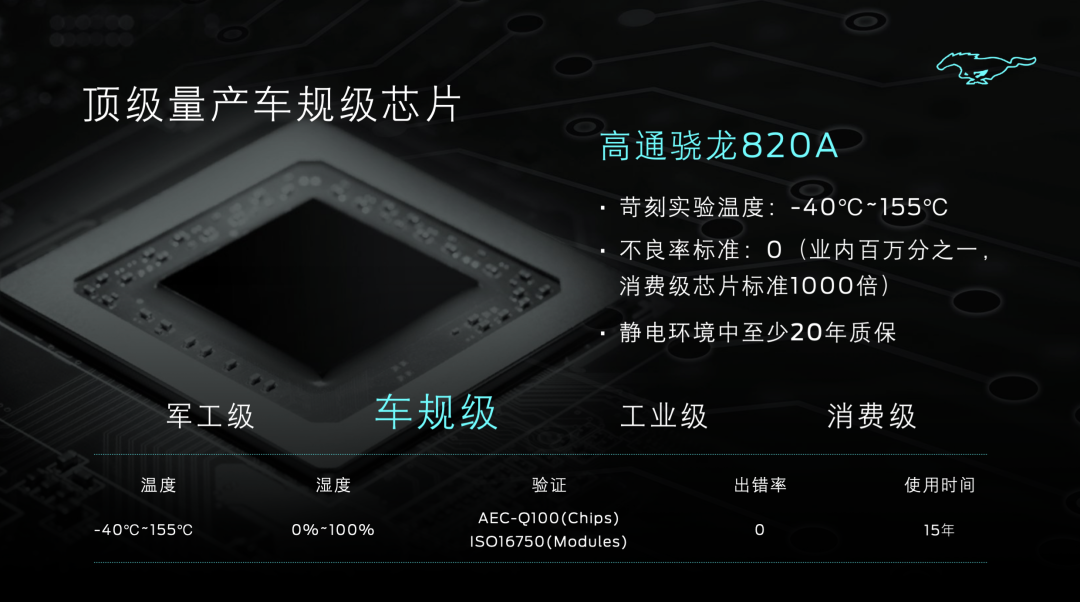
Of course, Ford’s breakthrough in voice interaction can’t be separated from their strategic partner in China; Baidu. Ford’s multiple models in China have been equipped with Baidu’s intelligent voice and ecology empowering, and Mach-E is no exception. The newly upgraded Ford SYNC+ system on the domestic Mach-E is also based on in-depth cooperation with Baidu, providing a vehicle map that integrates charging scenarios, as well as rich ecological resources such as QQ Music, Himalayan FM, iQiyi, Meituan ETCP, Baidu Maps, Ctrip, and Du Xiaoman Wallet. It also supports “non-perceptible payment” of RMB 200 or less, including content purchases, meals and tickets, and parking.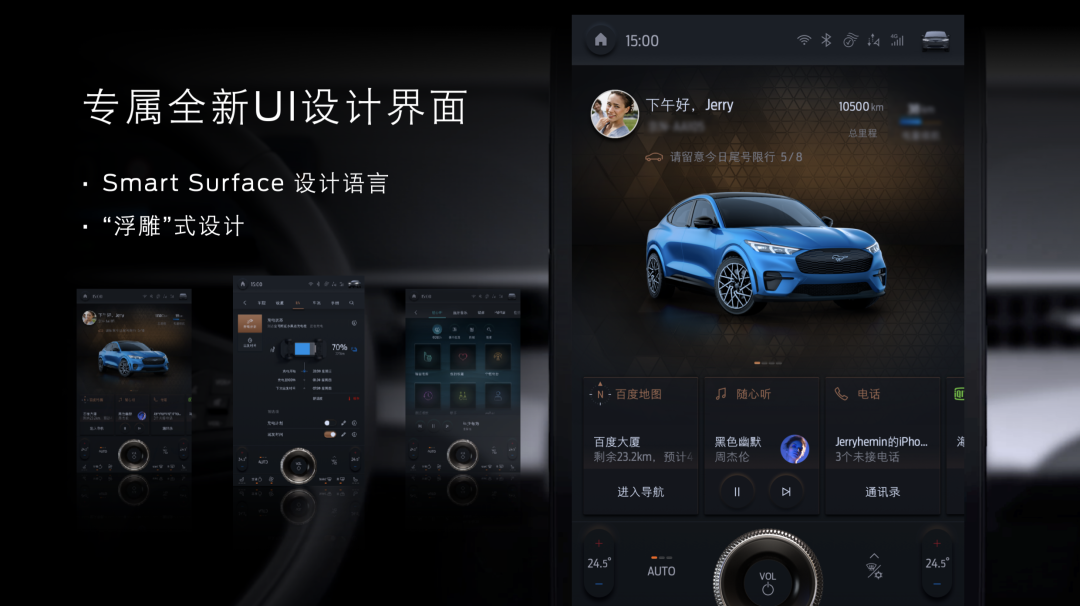
Therefore, it can be said that the new SYNC+ system that will be installed on Mach-E will be a vehicle interaction system tailored for the Chinese market that can be quickly implemented. Perhaps it doesn’t have as many fancy designs and “show-off” features, but I think “down-to-earth and user-friendly” should be the key words for this system. We hope that GeekCar will be the first to provide a detailed evaluation and experience for everyone.
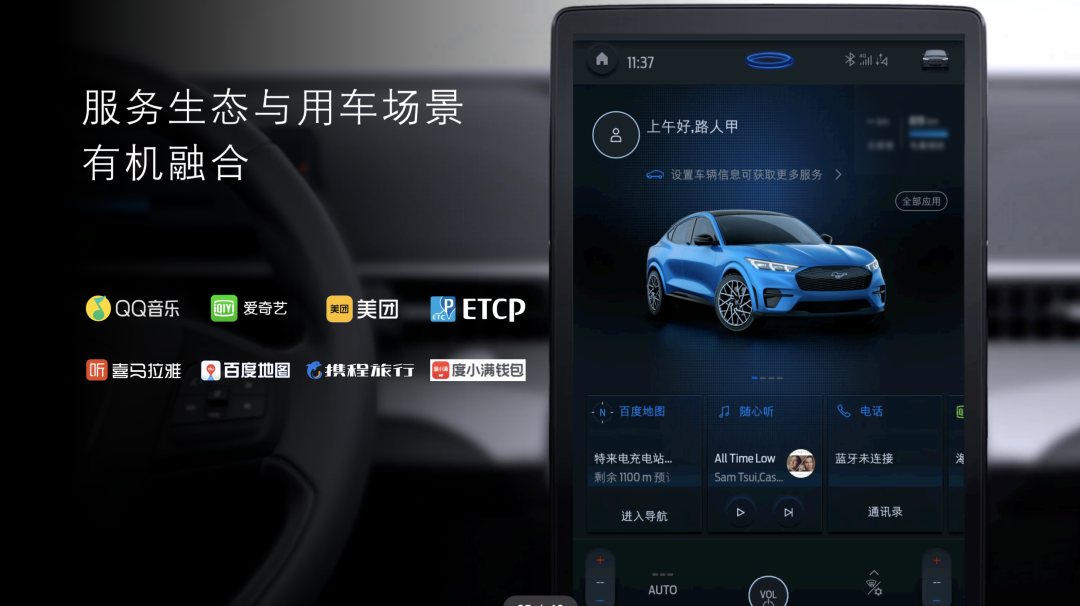
Scenario-based “Autonomous Driving”
There is no doubt that Ford’s investment in autonomous driving is a symbol of “financial capability”, such as the sensational acquisition of Argo AI, an autonomous driving company, for billions of dollars several years ago. However, in an era where L3 or even L4 “satellites” are easily released, Ford’s engineers in China have repeatedly emphasized that L2+ is the limit for Mach-E at present, not L3. I think this approach is relatively reasonable and realistic at the current point in time, because technology will be limited by too many factors, and Ford hopes to give users a more “reliable” choice.
In terms of hardware, Mach-E is equipped with 6 cameras, 5 millimeter-wave radars, and 12 ultrasonic radars. Ford’s self-developed Co-Pilot 360 computing domain platform integrates Infineon’s Aurix computing chip, the new generation of MobileyeQ4 image processing chip, and the TI TDA ring-shaped camera processing chip. It can currently implement 26 driving assistance functions and L2+ assisted driving (longitudinal and lateral control), and can achieve automatic lane changing and exiting in designated areas with hands-off capabilities (BlueCruise active driving assistance).
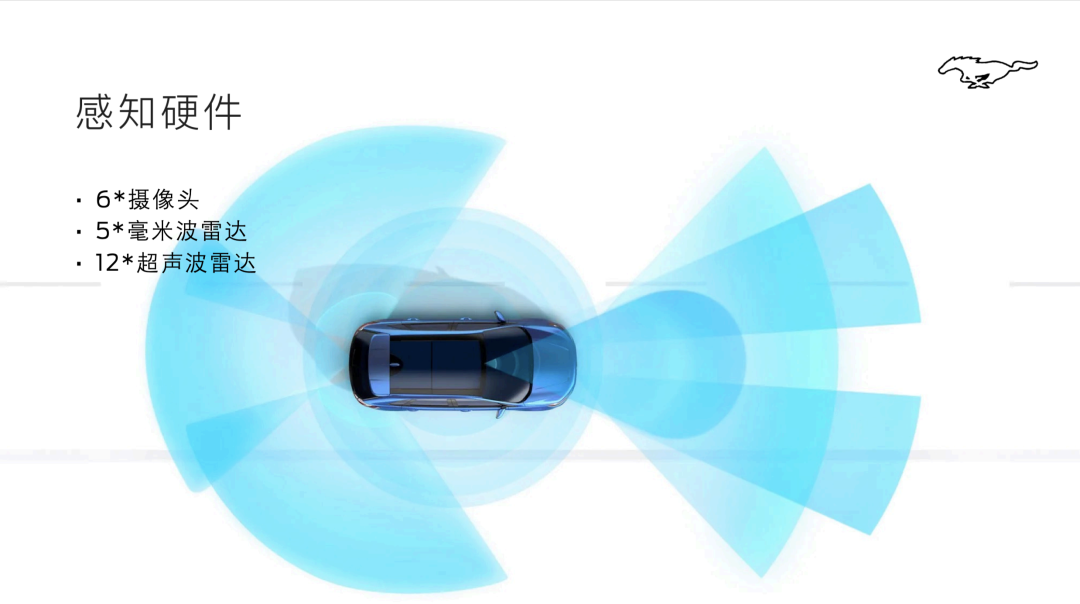
The automatic navigation function similar to Tesla NOA, NIO NOP, and XPeng NGP from point A to point B is still under testing and may be achieved through upgrades in the future.
Among the 26 driving assistance functions, in addition to the familiar iACC full-speed intelligent adaptive cruise control function, there is also the ESA emergency evasive steering assistance function. The system automatically determines and executes emergency evasive maneuvers when it is unable to avoid a rear-end collision while ensuring the safety of both sides of the lane, avoiding the occurrence of rear-end accidents.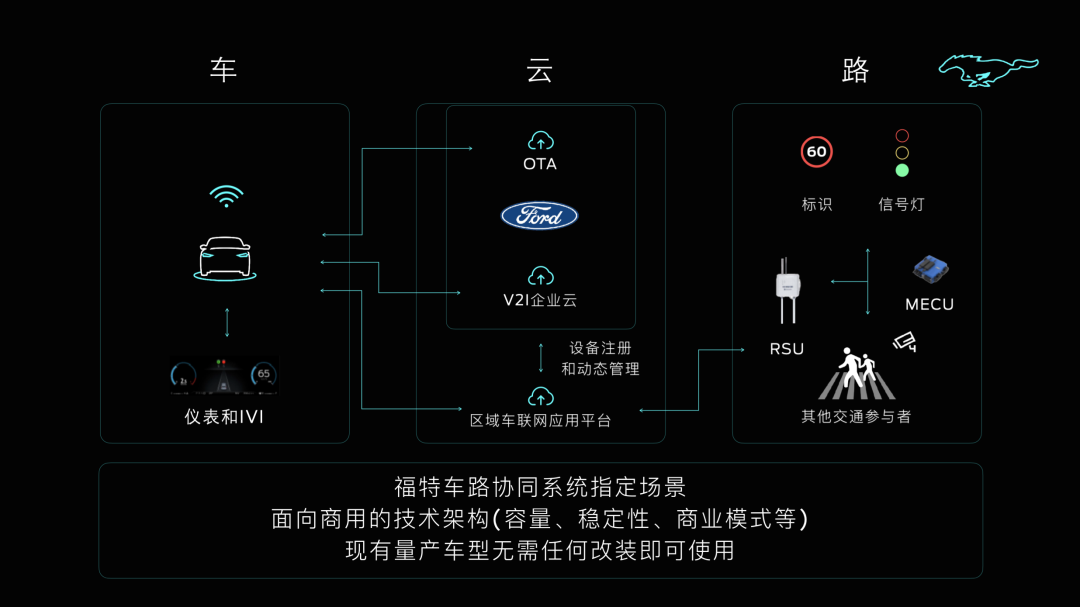
Meanwhile, the Mach-E will also become the first production model in China equipped with C-V2X technology. Ford has been conducting technology testing and actively cooperating with government departments in the C-V2X field. Previously, we experienced Ford’s related technology at the IoT Conference in Wuxi, such as reminding drivers of green lights, guiding them through green waves, and warning of crossing red lights, by recognizing traffic signals. This helps to avoid unnecessary violations and running red lights risk. Ford engineers indicated that C-V2X functions will be opened in 9 major cities, including Beijing Yizhuang, Baoding, Wuxi, Changsha, Shenzhen, Cangzhou, Nanjing, Guangzhou, and Jinan, by the end of 2021.
The All-In Ford
“If we don’t challenge ourselves, someone else will do the job for us,” said Jim Farley, Ford’s global CEO, in a Beijing accent.
As the Chief Operating Officer of Ford Electric Vehicle Division (China), Zhu Jiang, may have a more profound understanding of the meaning of this sentence, having personally experienced the wave of “new forces making cars.” Thus, he emphasized that Ford is transforming itself into a technology company. Of course, he certainly understands the technical and ideological difficulties of this “transformation.”
We are also witnessing Ford’s changes. For example, it was hard to imagine that an engineer from a traditional automaker would have such close and in-depth product and technology communications before a new car launch. Also, it was hard to imagine that engineers and product managers at a traditional automaker would not have a fixed workspace in the office.
This change in environment is not just superficial, particularly for a long-established enterprise, where it has much deeper significance. We can see changes in technology and product patterns, market branding, and user mindset, but deeper changes in corporate culture and genes may present a greater challenge.
The Mustang Mach-E, such an emerging intelligent EV, has great significance for Ford. It embodies not only the legendary bloodline of Mustang but also shoulders the task of confronting the “new world’s EV giant,” representing Ford’s determination to transform this centennial enterprise.
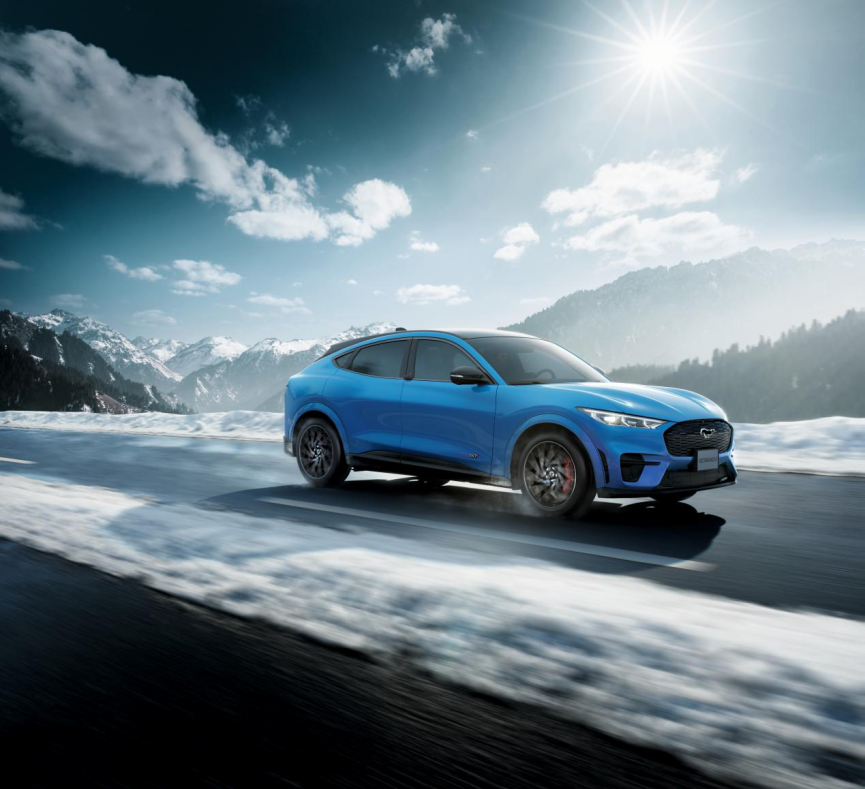
Therefore, we have special attention and expectations for this car, which we call the “most anticipated EV dark horse of 2021.”
As the collision between the old and new worlds continues, and they merge gradually, the curtain has just been raised on intelligent EVs. The following performances will be very exciting.
This article is a translation by ChatGPT of a Chinese report from 42HOW. If you have any questions about it, please email bd@42how.com.
